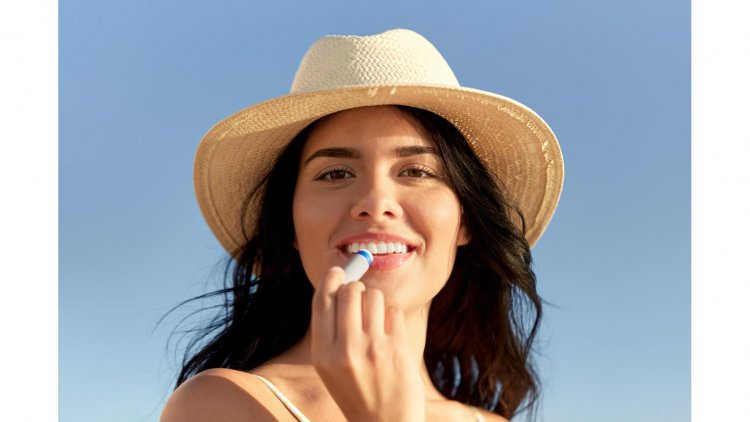The Ultimate Guide to Choosing the Perfect SPF Lip Balm: Your Lips' Best Defense
Our lips are often overlooked in our sun protection routines, but they deserve just as much attention as the rest of our skin. Finding the right lip balm with SPF can be a game-changer for maintaining lip health and preventing sun damage. But with countless options on the market, how do you know which one is right for you? This comprehensive guide will walk you through everything you need to know to make an informed choice, from understanding SPF ratings to considering your specific lip needs.

Decoding SPF: What Does It Really Mean for Your Lips?
When it comes to lip balms with SPF, understanding what SPF means is crucial. SPF, or Sun Protection Factor, measures how well a product protects your skin from UVB rays, which are the primary cause of sunburn. However, SPF ratings are not just numbers; they represent the level of protection offered.
How SPF Works
For instance, SPF 15 means you can stay in the sun 15 times longer without burning than if you weren't wearing sunscreen. If you typically start to burn after 10 minutes of sun exposure, SPF 15 theoretically allows you to stay in the sun for up to 150 minutes before burning. However, this is a general guideline and can be affected by factors like sweat, water, and how frequently you apply the balm.
SPF Ratings: More Isn’t Always Better
It’s a common misconception that higher SPF numbers always mean better protection. While SPF 30 provides twice the protection of SPF 15, it doesn’t mean SPF 100 is six times better. SPF ratings above 30 offer diminishing returns, with SPF 30 and SPF 50 generally providing ample protection for most people. Also, no lip balm can offer 100% protection, so regular reapplication is key.
Ingredients Matter: What to Look for in SPF Lip Balm
Choosing a lip balm with SPF isn’t just about picking the highest number; it’s also about the quality and type of ingredients used. Here’s what to look for:
Broad-Spectrum Protection
A good SPF lip balm should offer broad-spectrum protection, meaning it shields against both UVA and UVB rays. UVA rays penetrate deeper into the skin and are responsible for premature aging, while UVB rays cause sunburn. Broad-spectrum protection ensures you’re covered on all fronts.
Physical vs. Chemical Sunscreens
Lip balms use either physical (mineral) or chemical sunscreens. Physical sunscreens, like zinc oxide and titanium dioxide, sit on top of the skin and physically block UV rays. They are often recommended for sensitive skin and provide immediate protection. Chemical sunscreens, such as avobenzone, octocrylene, and octinoxate, absorb UV rays and convert them into heat, which is then expelled from the skin. Both types can be effective, but physical sunscreens are less likely to cause irritation.
Hydrating Ingredients
Since lip balms are primarily for moisturizing, hydrating ingredients are essential. Look for balms containing natural oils (like coconut oil or jojoba oil), shea butter, or vitamin E. These components not only nourish your lips but also help lock in moisture and create a barrier against environmental stressors.
Avoid Harmful Additives
Some lip balms contain potentially harmful additives, such as parabens, synthetic fragrances, or artificial colors. Opt for products labeled as hypoallergenic, fragrance-free, and made with natural or organic ingredients. These options are often gentler on sensitive lips and reduce the risk of adverse reactions.
Choosing the Right SPF Lip Balm for Different Activities
Different activities expose your lips to varying degrees of sun and environmental stress. Here’s how to choose the best lip balm for your needs:
For Everyday Use
If you’re looking for a daily lip balm, SPF 15 to 30 is usually sufficient. This level of protection will shield your lips from incidental sun exposure and environmental damage during your daily routine. Opt for a lip balm with added moisturizing agents to keep your lips soft and hydrated throughout the day.
For Outdoor Activities
For activities like hiking, swimming, or playing sports, you’ll need a more robust SPF. Choose a lip balm with SPF 30 to 50, and consider a water-resistant formula if you’ll be sweating or swimming. Water-resistant lip balms help maintain protection even when exposed to moisture.
For Winter Sports
Cold, windy conditions can be harsh on your lips, making them more susceptible to chapping and sunburn. In these conditions, opt for a high SPF lip balm (SPF 30 or higher) with extra moisturizing ingredients to protect against both UV rays and harsh weather conditions.
For Sensitive Skin
If you have sensitive lips, look for a lip balm with physical sunscreens like zinc oxide or titanium dioxide, as these are less likely to cause irritation. Hypoallergenic and fragrance-free options are also preferable.
Application Tips for Maximum Effectiveness
To ensure your lip balm with SPF provides optimal protection, proper application and reapplication are key.
Applying Lip Balm
- Use Generously: Apply a generous layer to cover all areas of your lips. Don’t forget to cover the edges and corners of your lips, as these areas are often missed.
- Apply Before Sun Exposure: Apply your lip balm about 15-30 minutes before going outside to allow it to fully absorb and start working.
- Layering: If you use other lip products, apply the SPF lip balm as the final layer to ensure it remains effective.
Reapplication
- Frequency: Reapply every 2 hours, or more frequently if you’re swimming, sweating, or wiping your lips. Even water-resistant formulas need to be reapplied after excessive moisture exposure.
- After Eating or Drinking: Always reapply after eating or drinking, as these activities can wear away the product and reduce its effectiveness.
Understanding the Label: What to Watch Out For
Reading the label on a lip balm with SPF can be daunting, but knowing what to look for helps you make the best choice.
Expiry Dates
Check the expiry date to ensure the product is still effective. Using an expired lip balm can lead to reduced SPF protection and potential irritation.
Water Resistance
If you need a lip balm for swimming or intense physical activities, look for water-resistant formulas. However, remember that water resistance doesn’t mean waterproof, so reapply frequently.
Dermatologist-Tested
Some lip balms are labeled as dermatologist-tested, indicating they’ve been evaluated for skin sensitivity and safety. This can be a reassuring factor, especially for those with sensitive skin.
The quest for the perfect SPF lip balm is an essential step in safeguarding your lips from sun damage and maintaining their health. By understanding SPF ratings, examining ingredient lists, and considering your specific needs, you can find a product that offers the protection and care your lips deserve.
Beyond the Basics: Navigating Brands and Preferences
When selecting an SPF lip balm, brand reputation and personal preferences play significant roles. Here's a closer look at how to navigate these factors:
Brand Reputation
Some brands are known for their commitment to quality and effectiveness in sun protection. Established brands often have rigorous testing and safety standards, providing greater confidence in their products. Look for brands with positive reviews and endorsements from dermatologists or skincare experts.
Personal Preferences
Personal preferences, such as scent, flavor, and texture, also matter. Some people prefer unscented and flavor-free balms, while others might enjoy a hint of vanilla or mint. The texture can range from creamy and smooth to more solid and matte. Testing a few different options can help you find what works best for your taste and comfort.
Eco-Friendly Options
With increasing awareness about environmental impact, many brands now offer eco-friendly or biodegradable packaging. If sustainability is important to you, consider lip balms that use recyclable or compostable materials and are free from harmful chemicals.
Addressing Common Concerns and Misconceptions
Several common concerns and misconceptions can influence your choice of SPF lip balm. Let's address these to help you make a well-informed decision:
"My Lip Balm Already Has SPF; Is That Enough?"
While having SPF in your lip balm is essential, it's crucial to ensure it's broad-spectrum and adequately protects against both UVA and UVB rays. Additionally, remember that SPF needs to be reapplied regularly to maintain its effectiveness.
"Higher SPF Means Better Protection, Right?"
As mentioned earlier, SPF 30 to 50 typically provides sufficient protection for most people. Higher SPF numbers don't significantly increase protection and can sometimes lead to a false sense of security. Proper application and regular reapplication are more important than just a high SPF number.
"Can I Use Regular Sunscreen on My Lips?"
While you can use regular sunscreen on your lips, it might not be as comfortable or practical as a dedicated lip balm. Lip balms with SPF are specially formulated to be moisturizing and comfortable for the delicate skin of the lips.
"Are Natural or Organic SPF Lip Balms Less Effective?"
Natural or organic SPF lip balms can be just as effective as their synthetic counterparts. The key is to ensure they contain adequate SPF and broad-spectrum protection. Always check the ingredient list and certification to ensure you’re getting the protection you need.
Innovations in SPF Lip Balms: What’s New?
The skincare industry is constantly evolving, and innovations in SPF lip balms are no exception. Here are some of the latest trends and advancements:
Enhanced Hydration
Recent advancements have led to lip balms that offer not just sun protection but also enhanced hydration. Ingredients like hyaluronic acid, collagen boosters, and advanced moisturizers are being incorporated to provide longer-lasting moisture and plumpness.
Multi-Functional Formulas
Newer formulas are designed to address multiple lip concerns simultaneously. Some balms offer anti-aging benefits, while others combine SPF with tint for a hint of color. These multi-functional products save time and add versatility to your lip care routine.
Eco-Conscious Formulations
As environmental concerns grow, many brands are developing eco-conscious formulations. These include using biodegradable ingredients and sustainable packaging to reduce environmental impact. Choosing these options supports both your lips and the planet.
Technology-Driven Protection
Some lip balms are incorporating advanced technology for better UV protection. Nanotechnology and other innovations are used to enhance the effectiveness and longevity of SPF ingredients. Keep an eye out for these cutting-edge products for superior protection.
The journey to finding the perfect SPF lip balm involves understanding your needs, evaluating product ingredients, and considering personal preferences and concerns. With the right knowledge and careful selection, you can ensure that your lips are well-protected and cared for, whether you’re navigating daily life or enjoying outdoor adventures.
Choosing the right SPF lip balm is not just about picking a product; it's about making a choice that aligns with your lifestyle and provides optimal protection for your lips. Stay informed, stay protected, and enjoy the peace of mind that comes with well-chosen sun protection for your lips.
Disclaimer: The content shared on this blog is intended for informational purposes only. Consulting a professional about the highlighted information is recommended. The blog and its authors are not liable for any adverse effects or consequences resulting from the use of the methods or products provided. Always prioritize your health and safety.
What's Your Reaction?





















